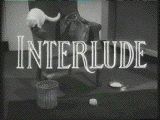 Programmes that featured flowers and plants were produced almost from day one; the very first week of programmes back in 1936 included one featuring prize chrysanthemums. Alexandra Palace (the BBC’s base from 1936 to 1960) has gardens which were an obvious choice to be used if the limited studio facilities were otherwise unavailable, though live outdoor programming was restricted sometimes by the unpredictable English weather.
Programmes that featured flowers and plants were produced almost from day one; the very first week of programmes back in 1936 included one featuring prize chrysanthemums. Alexandra Palace (the BBC’s base from 1936 to 1960) has gardens which were an obvious choice to be used if the limited studio facilities were otherwise unavailable, though live outdoor programming was restricted sometimes by the unpredictable English weather.
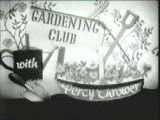 In 1956 the BBC started a monthly series that catered for real gardening enthusiasts, called Gardening Club. It was a big success, to such an extent that it established presenter Percy Thrower as a major celebrity (in a similar vein to Barry Bucknell, who was to be similiarly associated with do-it-yourself programmes).
In 1956 the BBC started a monthly series that catered for real gardening enthusiasts, called Gardening Club. It was a big success, to such an extent that it established presenter Percy Thrower as a major celebrity (in a similar vein to Barry Bucknell, who was to be similiarly associated with do-it-yourself programmes).
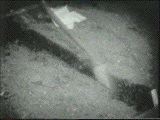 Outdoor television presents a whole set of challenges (rain, wind, etc.), but mishaps can still happen in the ‘controlled’ indoor studio environment. In order to effectively hear Percy Thrower’s voice, microphones were concealed in the soil (tiny radio microphones were yet to be developed), but once after he had finished putting plants into the soil, he started to water them, and since the concealed microphones were not waterproof…
Outdoor television presents a whole set of challenges (rain, wind, etc.), but mishaps can still happen in the ‘controlled’ indoor studio environment. In order to effectively hear Percy Thrower’s voice, microphones were concealed in the soil (tiny radio microphones were yet to be developed), but once after he had finished putting plants into the soil, he started to water them, and since the concealed microphones were not waterproof…
 In 1968 BBC2 were still experimenting with outdoor colour programming; the wide range of colours found in gardens were a natural choice for assessing colour accuracy. Six experimental gardening programmes were made using colour equipment; unfortunately all recordings of these have been lost.
In 1968 BBC2 were still experimenting with outdoor colour programming; the wide range of colours found in gardens were a natural choice for assessing colour accuracy. Six experimental gardening programmes were made using colour equipment; unfortunately all recordings of these have been lost.
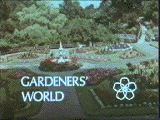 BBC2 (and colour television) was the natural home for gardening programmes, so Gardeners’ World started on Friday 5 January 1968 as a series to fulfill the demand for such programming. The main presenter was (again) Percy Thrower, though this time there were various co-presenters such as Arthur Billett, Kenneth Burras, Alice Coats and Geoffrey Smith. Gardeners’ World – with or without the apostrophe – has continued to the present day, albeit with an occasionally-changing roster of presenters.
BBC2 (and colour television) was the natural home for gardening programmes, so Gardeners’ World started on Friday 5 January 1968 as a series to fulfill the demand for such programming. The main presenter was (again) Percy Thrower, though this time there were various co-presenters such as Arthur Billett, Kenneth Burras, Alice Coats and Geoffrey Smith. Gardeners’ World – with or without the apostrophe – has continued to the present day, albeit with an occasionally-changing roster of presenters.
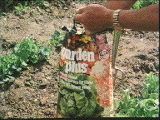 All was running smoothly until 1976, when Percy Thrower did (in many people’s eyes) the unthinkable and appeared in a TV commercial for Garden Plus fertiliser. His name was already associated with gardening products, but this commercial meant that it was possible for viewers to watch ITV and see him actively endorsing a product, then switch over to BBC2 and see him again in the garden. The result could have confused some people, as well as going against the principles of non-commercial television, so the BBC did what they thought was necessary by sacking him.
All was running smoothly until 1976, when Percy Thrower did (in many people’s eyes) the unthinkable and appeared in a TV commercial for Garden Plus fertiliser. His name was already associated with gardening products, but this commercial meant that it was possible for viewers to watch ITV and see him actively endorsing a product, then switch over to BBC2 and see him again in the garden. The result could have confused some people, as well as going against the principles of non-commercial television, so the BBC did what they thought was necessary by sacking him.
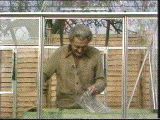 Life must go on (after all there’s the grass to be cut…), so Percy Thrower was replaced by Peter Seabrook, who didn’t exactly look like a typical gardener (quote: “He looked more like an accountant”), though the co-presenters such as Arthur Billit, Geoffrey Smith and Clay Jones (pictured) remained the same, helping to smooth the transition. Replacing Percy Thrower was always going to be difficult, but the loyalty of the viewers and the quality of the current and later presenters kept the show going. After all, the show was all about gardening and not personalities.
Life must go on (after all there’s the grass to be cut…), so Percy Thrower was replaced by Peter Seabrook, who didn’t exactly look like a typical gardener (quote: “He looked more like an accountant”), though the co-presenters such as Arthur Billit, Geoffrey Smith and Clay Jones (pictured) remained the same, helping to smooth the transition. Replacing Percy Thrower was always going to be difficult, but the loyalty of the viewers and the quality of the current and later presenters kept the show going. After all, the show was all about gardening and not personalities.

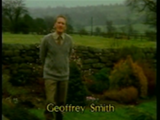
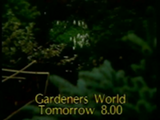 Geoffrey Smith featured in this promotion for a new series of Gardeners World (sometimes spelt without an apostrophe, as is the case here) in 1981, talking about tomato plants and how they are flowering earlier in the South of England compared to elsewhere in the UK.
Geoffrey Smith featured in this promotion for a new series of Gardeners World (sometimes spelt without an apostrophe, as is the case here) in 1981, talking about tomato plants and how they are flowering earlier in the South of England compared to elsewhere in the UK.
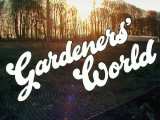 This is what the Gardeners’ World titles looked like in 1982 – at this point the theme music was still the same as it was in the 1970s – with the typeface employed bearing a resemblance to that used by a certain brand of flower seed.
This is what the Gardeners’ World titles looked like in 1982 – at this point the theme music was still the same as it was in the 1970s – with the typeface employed bearing a resemblance to that used by a certain brand of flower seed.
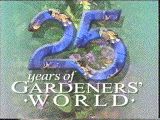 Garden technology may evolve with the introduction of more advanced pesticides, plant varieties and garden machinery, but Gardeners’ World still carried on regardless, celebrating its 25th anniversary in 1994. The show had been contracted out to independent producers in 1993 and some had complained about the changes, but the show must go on (as they say). In recent years the gardens featured have been in a wider range of locations due to smaller and lighter video equipment becoming available.
Garden technology may evolve with the introduction of more advanced pesticides, plant varieties and garden machinery, but Gardeners’ World still carried on regardless, celebrating its 25th anniversary in 1994. The show had been contracted out to independent producers in 1993 and some had complained about the changes, but the show must go on (as they say). In recent years the gardens featured have been in a wider range of locations due to smaller and lighter video equipment becoming available.
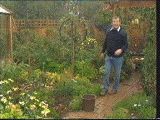 One of the best-loved presenters of Gardeners’ World was Geoff Hamilton (1990-1996), who tragically died from a heart attack shortly before the series Geoff Hamilton’s Paradise Gardens was completed (his brother helped to complete the final episode). His garden (known as Barnsdale) was an inspiration to tired gardeners everywhere; infact there had been two ‘Barnsdales’ (the first one had become too small); the larger final one actually comprising of no less than thirty separate smaller gardens.
One of the best-loved presenters of Gardeners’ World was Geoff Hamilton (1990-1996), who tragically died from a heart attack shortly before the series Geoff Hamilton’s Paradise Gardens was completed (his brother helped to complete the final episode). His garden (known as Barnsdale) was an inspiration to tired gardeners everywhere; infact there had been two ‘Barnsdales’ (the first one had become too small); the larger final one actually comprising of no less than thirty separate smaller gardens.
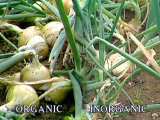 As well as being a well-loved presenter, Geoff Hamilton made one very significant contribution to the world of agriculture (not just gardening), notably the promotion of organic methods of pest control and the elimination of chemicals from the food chain at a time when such methods had fallen out of favour (and organic food was virtually unobtainable). Also he wasn’t afraid to show viewers the results of such organic experiments even if they had failed, since the point of the exercise was to learn from these mistakes, and crucially these organic methods were presented as an alternative to the use of conventional pesticides (which were also used as a comparison) as opposed to only being told one way of doing things.
As well as being a well-loved presenter, Geoff Hamilton made one very significant contribution to the world of agriculture (not just gardening), notably the promotion of organic methods of pest control and the elimination of chemicals from the food chain at a time when such methods had fallen out of favour (and organic food was virtually unobtainable). Also he wasn’t afraid to show viewers the results of such organic experiments even if they had failed, since the point of the exercise was to learn from these mistakes, and crucially these organic methods were presented as an alternative to the use of conventional pesticides (which were also used as a comparison) as opposed to only being told one way of doing things.
This proved to otherwise sceptical gardeners that organic methods were not only easy to achieve practically but also often resulted in the production of better quality food. Nowadays organic food can be found in every major supermarket, and that in itself is due in no small part to Geoff Hamilton’s pioneering work in this area.
 From 1996, Gardeners’ World continued with Alan Titchmarsh becoming the main presenter along with Pippa Greenwood and Gay Search being regular presenters in 1998 as the show reached its 30th year. Alan Titchmarsh subsequently moved on in 2002 to other areas such as replacing Sheridan Morley as the presenter of the Radio 2 Arts Programme, and Monty Don took over as the main presenter.
From 1996, Gardeners’ World continued with Alan Titchmarsh becoming the main presenter along with Pippa Greenwood and Gay Search being regular presenters in 1998 as the show reached its 30th year. Alan Titchmarsh subsequently moved on in 2002 to other areas such as replacing Sheridan Morley as the presenter of the Radio 2 Arts Programme, and Monty Don took over as the main presenter.
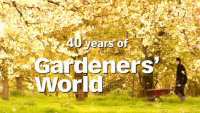 Gardeners’ World celebrated its 40th year in 2008 and still survives to this day despite competing series such as Ground Force vying for attention. Monty Don had to take a break in 2009 due to health concerns despite his popularity. He was replaced by co-presenter Toby Buckland in 2009, and after a short-lived revamp of the show that used 60 minute-long episodes with added features which had been likened (amongst other things) to elements of programmes such as popular motoring show Top Gear (by featuring a ‘cool wall’) and CBeebies by virtue of featuring young children, Gardeners’ World essentially returned to its roots in 2010 with a reversion to a 30-minute format, with Monty Don returning to the show soon afterwards.
Gardeners’ World celebrated its 40th year in 2008 and still survives to this day despite competing series such as Ground Force vying for attention. Monty Don had to take a break in 2009 due to health concerns despite his popularity. He was replaced by co-presenter Toby Buckland in 2009, and after a short-lived revamp of the show that used 60 minute-long episodes with added features which had been likened (amongst other things) to elements of programmes such as popular motoring show Top Gear (by featuring a ‘cool wall’) and CBeebies by virtue of featuring young children, Gardeners’ World essentially returned to its roots in 2010 with a reversion to a 30-minute format, with Monty Don returning to the show soon afterwards.
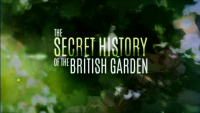 As well as Gardeners’ World there have been other gardening-related programmes including The Secret History of the British Garden, also presented by Monty Don. This four-part series covering the 17th, 18th, 19th and 20th centuries was originally broadcast in December 2017 and charted the progress of gardening from when it was a preserve of wealthy land owners and royalty right up to the present day as a mass market hobby. January 2018 is the 50th anniversary of Gardeners’ World and the UK’s love affair with horticulture shows no signs of going away.
As well as Gardeners’ World there have been other gardening-related programmes including The Secret History of the British Garden, also presented by Monty Don. This four-part series covering the 17th, 18th, 19th and 20th centuries was originally broadcast in December 2017 and charted the progress of gardening from when it was a preserve of wealthy land owners and royalty right up to the present day as a mass market hobby. January 2018 is the 50th anniversary of Gardeners’ World and the UK’s love affair with horticulture shows no signs of going away.
